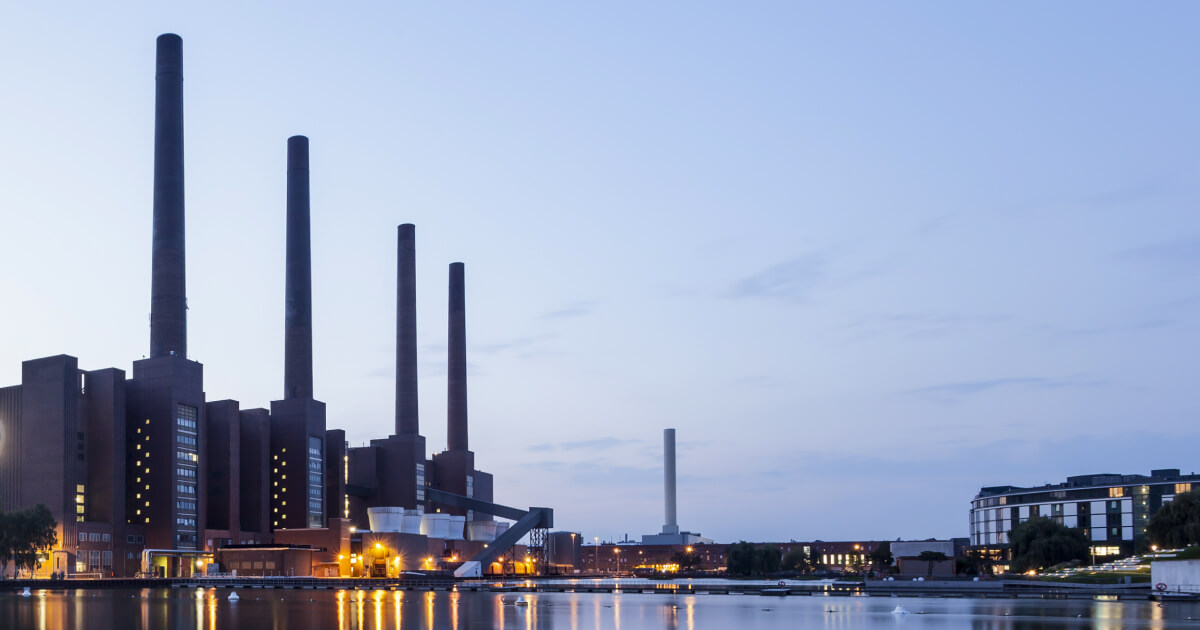
Opinions Green steel European Green Deal 798 19 October 2020
The EU’s experience in the implementation of the green industrial policy can be a driver of economic change in Ukraine
January 2021 will mark a year since the Green Transition Concept was presented in Ukraine. That document provides for an almost complete cut of greenhouse gas emissions. In scientific terms, Ukraine’s economy should become carbon-neutral by 2070.
This is a quite ambitious goal. Moreover, it can be dangerous as it poses risks for the economic growth. Greening of industrial facilities requires more investments. To put it more precisely, less investment in growth, more investment in environmental projects. Green technologies are expensive.
Decarbonization can also affect product competitiveness. Green goods require higher production costs. That’s why it is important to maintain balance between environmental goals and economic growth.
The European Green Deal on Steel is a good example. According to EUROFER, the European steel industry will cut greenhouse gas emissions by 55% by 2030, but that requires a set of measures to provide financial support to the industry, and a series of regulatory measures. These include, in particular, creation of a market for green goods through building a public procurement system, trade protection measures, support of investments in innovative solutions.
What is the result of these measures? European steelmakers are actively developing and testing new emission-reducing technologies. One of the recent examples is a pilot project (HYBRIT) aiming to introduce a hydrogen-based direct iron ore reduction. This will enable to almost fully prevent greenhouse gas emissions in the steelmaking process.
And this raises another question: where can steelmakers get so much hydrogen? The idea is to use clean hydrogen produced by electrolysis using electricity generated from renewable sources. In this case, hydrogen production for the energy sector is a solution for electricity storage which is a bottleneck in the green energy development. Europe is strongly determined to give up coal.
The transport sector is undergoing similar processes. Subsidies have made electric cars more affordable. And vice versa — emission standards for internal combustion engine vehicles have made conventional cars more expensive. Demand for lithium, copper, nickel, rare-earth metals is growing. In the long-term perspective, oil will be in less demand, which will also reduce demand for quite a lot of products and services relating to oil production and refining.
So, it turns out that application of new technologies triggers a series of economic transformations. In particular, it leads to creation of new value chains, new industries and markets. As a result, demand increases for some goods and decreased for other ones. Therefore, greening of economy means at the same time structural economic changes.
Is Ukraine ready for such transformations? Much has been done since the Green Transition Concept was adopted. For example, a package of documents was adopted for monitoring, reporting and verification of greenhouse gas emissions. This creates conditions for introducing an emissions trading system in Ukraine. Also, a positioning document On Ukraine’s participation in the European Green Course was adopted. This document will become a basis for cooperation between the EU and Ukraine in the environmental sector.
In addition, Ukraine is now drafting the National Economic Strategy initiated by its government. Industry will be one of the vectors of the strategy. And green technologies will apparently be one of the key elements of Ukraine’s industry.
Joining the European green transition will be a very important step for Ukraine. Firstly, it means individual approach to the conditions of decarbonization of Ukraine’s economy. Secondly, this will help avoid barriers to exports to the EU, which is important in the context of the discussion of possible introduction of a special fiscal instrument (CBA) that will prevent exports of carbon-intensive products. Thirdly, this is expected to open funding sources for Ukraine.
As a developing economy, Ukraine cannot lead the decarbonization process. The leaders of this costly process are the world’s most developed economies. So, as part of the European Green Deal, Ukraine can take advantage of the EU experience. Considering the fact that Ukraine has not yet developed its own environmental policy documents, using Europe’s experience is quite rational. If Ukraine sets goals similar to the European ones, it is just rational to use the same instruments that the EU uses.
The EU’s approach to the environmental policy is systemic. To put it more simply, it is all about checks and balances, carrot and stick. Where there are certain restrictions the policy offers the instruments to address the problem. That is where the standards and tax policy become stricter, proper financial instruments, subsidies, trade barriers etc. are at hand. And these measures are taken in a comprehensive manner to enable better efficiency, which helps save money and avoid gaps in related industries. In the industrial sector, such set of measures is called ‘green industrial policy’.
Green industrial policy is a set of government measures that attempt to accelerate economic transformation to reduce harmful emissions, enhance resource efficiency, and at the same time increase productivity and competitiveness.
Green industrial policy not only allows mitigating risks associated with transition to zero-carbon economy, but can also boost economic growth. Such policy provides for stimulation of investment in new efficient technologies, creation of new jobs, creation of new markets, promotion of exports of clean products etc.
Decarbonization creates a bunch of challenges and risks for Ukraine’s economy. Given a complex and rational approach, however, leaving no room for populism, decarbonization plus the EU experience may become a driver for structural changes in our country’s economy. This may be an answer to the question of how we can do away with our obsolete technologies and stop being a mere resource colony.
At the same time, decarbonization is a global process and a global race. The first one to enter the new market can take advantage and leadership in the future. That’s why if developing countries strive to maintain their place in global value chains and enter the new markets, the implementation of the green industrial policy is not an option, or international commitment, or a popular trend, but a must.
The original article was posted here





